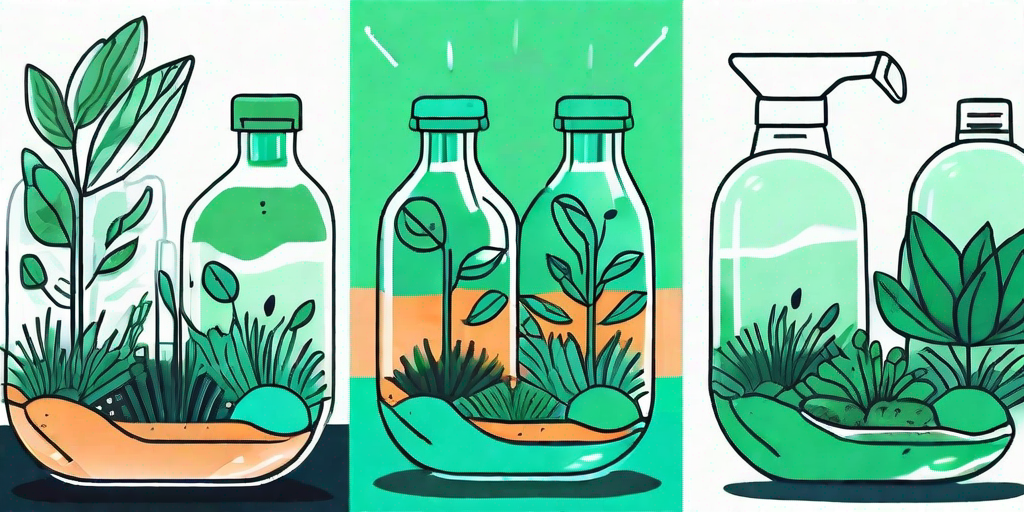
Soil, the unsung hero of our gardens, often gets a bad rap. It's either too acidic, too alkaline, too sandy, too clayey, or just too...soil-y. But fear not, dear reader, for we have a solution that will put an end to your soil woes. Enter the Soil Neutralizer, the knight in shining armor for your garden. This magical concoction promises to balance your soil's pH level, making it just right for your plants to thrive. So, buckle up as we take a deep dive into the world of soil neutralizers.
The Science Behind Soil Neutralizers
Before we delve into the nitty-gritty of soil neutralizers, let's take a moment to understand the science behind it. Soil pH is a measure of the acidity or alkalinity of the soil. It ranges from 0 (extremely acidic) to 14 (extremely alkaline), with 7 being neutral. Most plants prefer a pH between 6 and 7.5, a range where essential nutrients are most readily available.
However, due to various factors like rainfall, vegetation type, and human intervention, the soil's pH can become unbalanced, leading to nutrient deficiencies or toxicities. This is where soil neutralizers come into play. They work by adding or reducing acidity, bringing the soil's pH back to the optimal range.
Types of Soil Neutralizers
There are several types of soil neutralizers available in the market, each with its own set of pros and cons. The most common ones include lime, sulfur, and gypsum. Lime is used to raise the pH of acidic soils, while sulfur is used to lower the pH of alkaline soils. Gypsum, on the other hand, is used to improve the structure of heavy clay soils, making them easier to work with.
Choosing the right soil neutralizer depends on your soil's current pH and the type of plants you wish to grow. For instance, if you're growing blueberries, which prefer acidic soil, you might want to steer clear of lime. On the other hand, if you're growing vegetables like broccoli or cabbage, which prefer slightly alkaline soil, lime might be your best bet.
How to Use Soil Neutralizers
Now that we've covered the basics, let's move on to the fun part - using soil neutralizers. But before you start sprinkling these magic powders all over your garden, there are a few steps you need to follow.
First, you need to test your soil's pH. You can do this by using a soil pH tester, which is readily available at most garden centers. Once you have the results, you can determine the type and amount of soil neutralizer needed.
Applying the Soil Neutralizer
Applying a soil neutralizer is a fairly straightforward process. Simply spread the neutralizer evenly over the soil, then water it in. It's best to do this a few weeks before planting, as it takes some time for the neutralizer to work its magic.
Remember, moderation is key. Adding too much neutralizer can swing the pH too far in the other direction, causing more harm than good. It's always better to add a little at a time, testing the soil's pH regularly to monitor progress.
Benefits of Using Soil Neutralizers
Soil neutralizers are not just for fixing pH problems. They offer a host of other benefits that can significantly improve the health and productivity of your garden.
For starters, they improve nutrient availability. By bringing the soil's pH back to the optimal range, they ensure that essential nutrients are readily available to plants. This can lead to healthier, more productive plants.
Improved Soil Structure
Some soil neutralizers, like gypsum, can improve the soil's structure. They help break up heavy clay soils, making them easier to work with. This can improve root penetration and water movement, leading to healthier plants.
Additionally, soil neutralizers can help reduce the risk of certain soil-borne diseases. Many harmful fungi and bacteria thrive in overly acidic or alkaline soils. By neutralizing the pH, you can create an environment that's less conducive to these pathogens.
FAQs
Can I use soil neutralizers on all types of plants?
While most plants prefer a slightly acidic to neutral pH, some plants like rhododendrons, azaleas, and blueberries prefer more acidic soils. Using a soil neutralizer on these plants might not yield the best results. Always research the pH preferences of your plants before using a soil neutralizer.
How often should I use a soil neutralizer?
This depends on your soil's current pH and the type of neutralizer used. Generally, it's best to test your soil's pH annually and adjust as needed. Remember, it's easier to make small adjustments over time than to correct a large pH imbalance all at once.
Conclusion
And there you have it, folks! The ultimate solution to your soil woes. With a little bit of science and a sprinkle of soil neutralizer, you can transform your garden into a plant paradise. So, say goodbye to soil woes and hello to happier, healthier plants!















